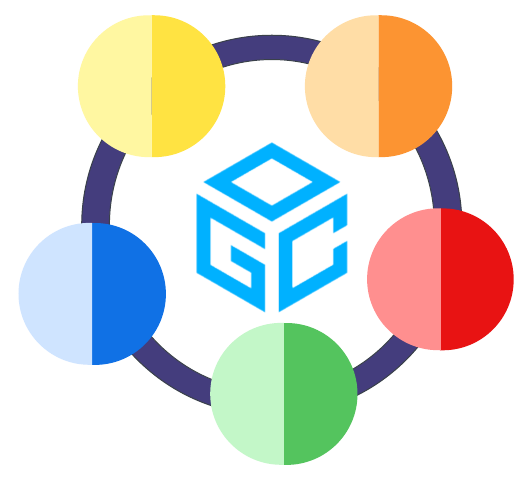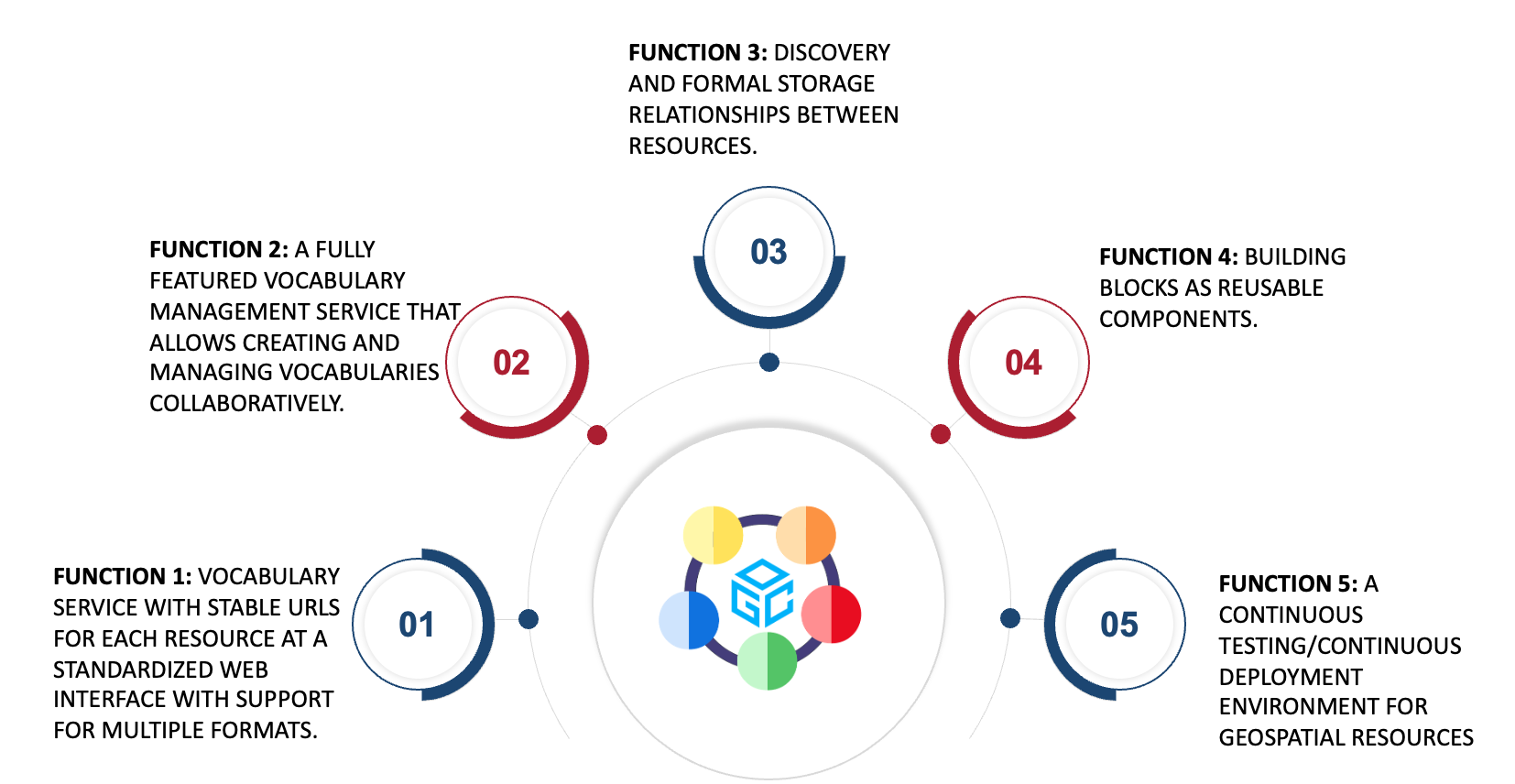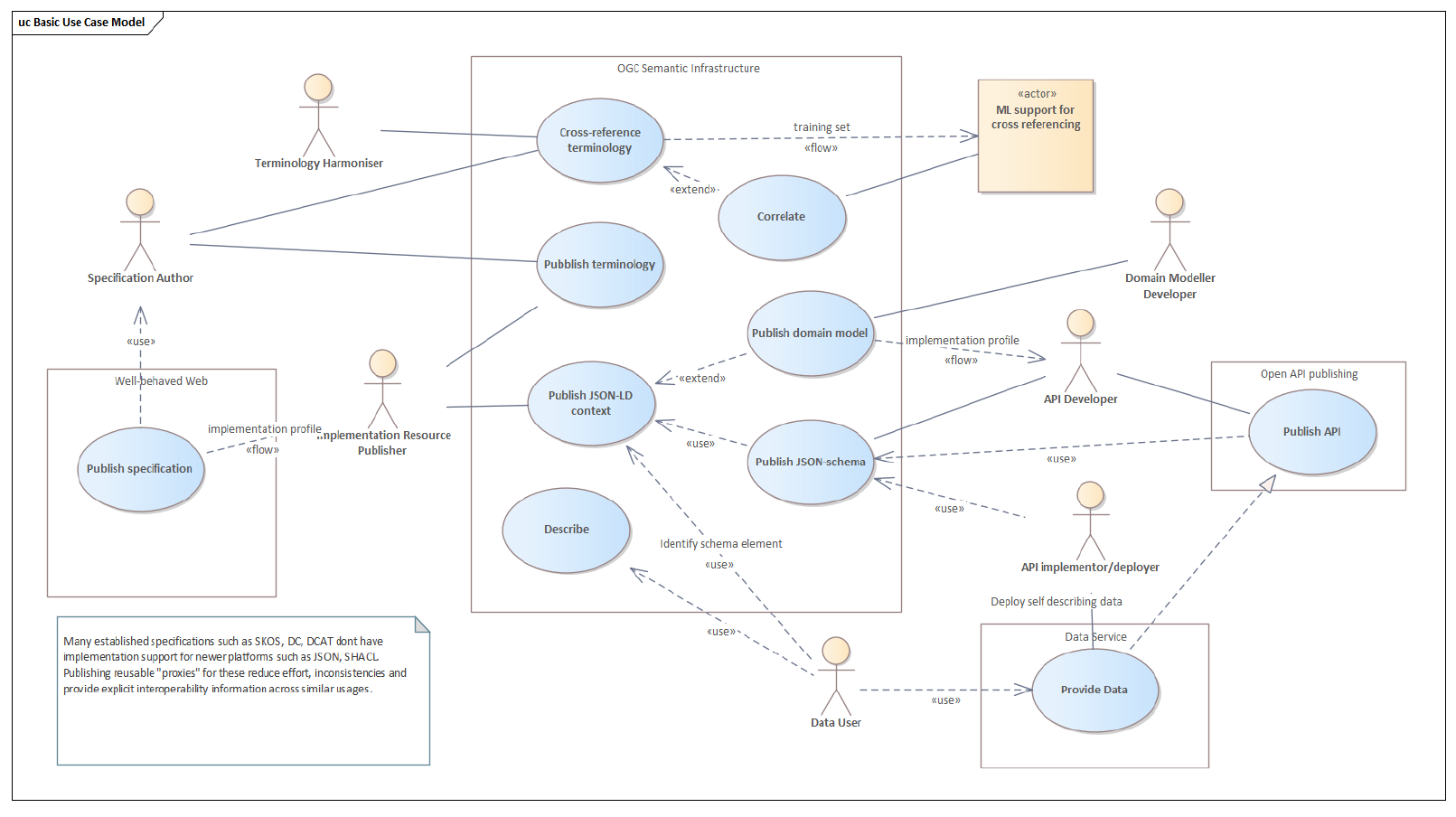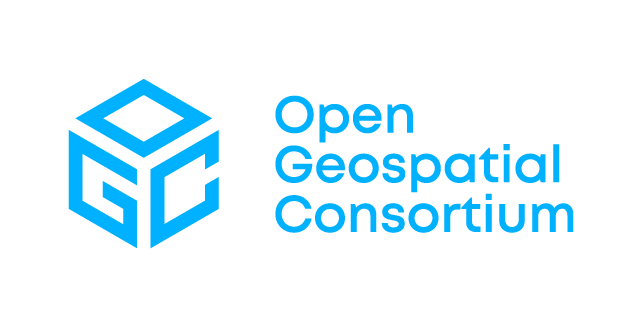OGC Rainbow
 OGC Rainbow is OGC’s enhanced interoperability environment. The environment enables semantic interoperability by providing five main functions. The goal is to support everyone to semantically annotate each resource that is offered online, to build links between resources, and to exploit those links between resources. A resource can be data, metadata, any cloud optimized resource such as a Cloud Optimized GeoTIFF (COG), an API, or any other element that is offered online. OGC Rainbow further provides building blocks for sophisticated geospatial data exchange and methodologies that simplify the data production and exchange process between data providers and data consumers.
OGC Rainbow is OGC’s enhanced interoperability environment. The environment enables semantic interoperability by providing five main functions. The goal is to support everyone to semantically annotate each resource that is offered online, to build links between resources, and to exploit those links between resources. A resource can be data, metadata, any cloud optimized resource such as a Cloud Optimized GeoTIFF (COG), an API, or any other element that is offered online. OGC Rainbow further provides building blocks for sophisticated geospatial data exchange and methodologies that simplify the data production and exchange process between data providers and data consumers.
This page explains the five main functions of OGC Rainbow. For a more in-depth introduction into interoperability in general and semantic interoperability in particular, please visit the semantic interoperability page.

The goal of OGC Rainbow is to semantically annotate each resources, to build links between resources, and to exploit these links between resources. What does each of these pieces actually means and what effect does it have? And why does OGC Rainbow works whereas the Semantic Web community that has tried this for 3 decades with little success?
Semantic interoperability can only be achieved if certain conditions are met. OGC Rainbow lowers the entry hurdle to a level that data providers can offer semantically annotated data with minimum extra effort. In fact, OGC Rainbow makes it so low that everyone should be willing to join the semantic band waggon.
Function 1: OGC Rainbow offers a vocabulary service with stable URLs for each resource at a standardized Web interface with support for multiple formats.
OGC Rainbow’s first function is to serve entire vocabularies as well as individual elements thereof at a standardized Web interface. This function simplifies the use of well-defined and globally unique URIs, a key ingredient of semantic annotation, which is essential for interoperability across communities.
Semantic annotation refers to the process of adding metadata or descriptive information to textual or multimedia content in order to enhance its meaning and facilitate its interpretation by machines. The annotations are typically added in the form of tags or labels that provide additional context and semantic understanding to the underlying data. The following example shows the difference using some hydrology data. In the following data expert, the attribute name does not provide any context information:
name = Rhein
Unlike the previous example, a fully deferenceable attribute name is globally unique and allows you to get more information about the attribute name:
https://www.opengis.net/def/schema/hy_features/hyf/name = Rhein
To be useful (and used), vocabularies must be available in standardized form in easy-to-find locations. OGC Rainbow provides the necessary infrastructure for this. The infrastructure ensures that users can dereference any URI. OGC Rainbow uses a URI redirect mechanism to ensure that URIs are persistent and never need to be changed. Vocabularies with their individual elements are thus available 24/7 through OGC Rainbow.
Function 2: OGC Rainbow provides a fully featured vocabulary management service that allows creating and managing vocabularies collaboratively.
 But what if a new vocabulary is needed or an existing one needs to be extended or otherwise changed? OGC Rainbow goes beyond just serving vocabularies or vocabulary entries at a well-known URL. OGC Rainbow provides a secure, multi-user collaborative vocabulary environment that allows communities to evolve and revise their vocabularies. The OGC Rainbow vocabulary service builds on Github repositories. OGC Rainbow allows distributed users to work together on a vocabulary. Intelligent import agents allow to serve vocabulares in simple formats, such as CSV. OGC Rainbow transforms these as necessary and stores them as RDF. Vocabulary entries are served in many formats, such as HTML, RDF, or Turtle.
But what if a new vocabulary is needed or an existing one needs to be extended or otherwise changed? OGC Rainbow goes beyond just serving vocabularies or vocabulary entries at a well-known URL. OGC Rainbow provides a secure, multi-user collaborative vocabulary environment that allows communities to evolve and revise their vocabularies. The OGC Rainbow vocabulary service builds on Github repositories. OGC Rainbow allows distributed users to work together on a vocabulary. Intelligent import agents allow to serve vocabulares in simple formats, such as CSV. OGC Rainbow transforms these as necessary and stores them as RDF. Vocabulary entries are served in many formats, such as HTML, RDF, or Turtle.
Function 3: OGC Rainbow discovers and formally stores relationships between resources.
The OGC Rainbow engine ensures in the background by means of so-called entailment rules that relationships between entries are discovered and formally stored. This includes vocabularies or vocabulary entries as well as any other form of hosted or registered resource.
What is an important feature for vocabularies becomes even more powerful when we extend the horizon of vocabularies to any form of resources. Serving or using data requires many information elements to be linked together. Data follows a certain data model that can be expressed as a schema in order to validate data instances; data is served at an API and described using metadata. While delivering data, service designers often do not read the data model specification, but follow examples and best practices. So what would be more helpful than if all these resources, data models, schemas, examples, service instances, metadata models, metadata catalogs, etc., were available as part of a knowledge graph?

Function 4: Building Blocks as reusable components.
tbd
Function 5: A continuous testing/continuous deployment environment for geospatial resources
CT/CD for data, specs, examples, etc.
